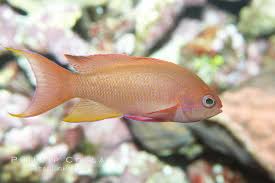The Dragon and Its Role in Traditional Acupuncture Practice

Acupuncture, a key component of Traditional Chinese Medicine (TCM), has long been celebrated for its holistic approach to health, promoting balance and restoring the flow of Qi (vital energy) throughout the body. It is a therapeutic practice that utilizes thin needles to stimulate specific points along meridians (energy pathways) to correct imbalances in the body. Throughout the rich history of acupuncture, numerous symbols, metaphors, and allegories have been utilized to represent the dynamic and vital forces that shape human health. One of the most potent and revered symbols in TCM and acupuncture is the dragon.
The dragon, as a symbol of strength, vitality, and cosmic power, holds a central place in Chinese culture and spirituality. Its influence extends beyond just mythology and art, permeating many aspects of TCM, including acupuncture. In acupuncture, the dragon is not only a symbol of energy flow and vitality but also serves as a model for the movement of Qi within the body and its interaction with the external environment.
This article will explore the role of the dragon in acupuncture, examining how its symbolism is intertwined with the principles of energy flow, healing, and vitality in traditional practices. The article will also delve into the ways in which the dragon’s metaphorical presence guides practitioners in achieving balance and harmony within the human body.
The Dragon as a Symbol in Traditional Chinese Medicine
In Traditional Chinese Medicine, the dragon is a powerful symbol of Qi and its circulation throughout the body. The concept of Qi is central to TCM, as it is believed to be the fundamental life force that sustains health. When Qi flows smoothly and freely, the body remains in a state of harmony and health. However, when Qi becomes blocked or stagnated, it can lead to illness and disease.
The dragon, often depicted as a long, serpentine creature, is seen as an embodiment of the flow of Qi. It is believed that the dragon’s undulating movement mirrors the natural flow of Qi throughout the body, particularly through the meridians, which are channels that carry Qi. The dragon’s constant motion and fluidity symbolize the essential need for continuous circulation of energy to maintain health and vitality.
The Dragon and the Meridians in Acupuncture
Acupuncture is based on the understanding that the human body is interwoven with a network of meridians through which Qi circulates. These meridians are like rivers of energy that connect different parts of the body. The role of acupuncture is to unblock any stagnant or deficient Qi within these meridians to restore health and balance.
The image of the dragon is particularly relevant when examining the concept of meridians in acupuncture. Just as a dragon weaves through the skies or the earth in a smooth, continuous flow, Qi too should circulate freely through the body. If the flow of Qi is obstructed, disease and imbalance may arise. The dragon is thus a powerful metaphor for the smooth, uninterrupted movement of Qi through the body’s meridians.
The lung meridian, for example, is often associated with the dragon’s ability to breathe and circulate air, symbolizing the flow of Qi through the respiratory system. The kidney meridian, another vital channel in TCM, is linked to the dragon’s connection with strength and longevity, emphasizing the importance of energy balance for long-term health. Acupuncturists often use the image of the dragon as a guiding force to direct Qi back into its natural flow, ensuring that the energy continues to nourish the body’s vital organs.
The Dragon’s Role in Balancing Yin and Yang
In acupuncture, the balance between Yin and Yang is a fundamental principle. Yin represents the passive, cool, and nourishing aspects of the body, while Yang symbolizes the active, hot, and stimulating forces. Together, Yin and Yang maintain harmony and vitality in the body.
The dragon, as a symbol of balance, is often used to illustrate the dynamic interplay between these two forces. In certain acupuncture practices, the dragon is depicted as a harmonious balance of both Yin and Yang energies. The dragon’s breath can symbolize the harmonious exchange between the forces of expansion (Yang) and contraction (Yin), helping practitioners understand the delicate equilibrium needed to promote wellness.
When Yin or Yang becomes unbalanced, illness can result. In these cases, acupuncture seeks to rebalance the energies and restore harmony within the body. The dragon’s presence within acupuncture practice serves as a constant reminder of the importance of this balance and the role it plays in overall health.
Dragon’s Influence in Acupuncture Points
Acupuncture points, or acupoints, are specific locations on the body where needles are inserted to stimulate the flow of Qi. These points are often strategically placed along the meridians to target areas where Qi is either blocked or deficient. The dragon’s symbolism is deeply embedded in the selection and stimulation of these acupoints.
Acupuncturists often view certain points as dragon-like in their ability to activate and restore the flow of Qi. For instance, Zu San Li (Stomach 36), a point located on the lower leg, is known as a “universal point” because it can regulate the flow of Qi throughout the entire body. This point is often described as “the dragon’s claw”, symbolizing the ability to grasp and redistribute Qi wherever it is needed.
Other acupoints, such as those associated with the liver meridian, often take on the metaphor of the dragon’s powerful claws, representing the ability to clear stagnation and enhance the smooth circulation of energy. The choice of acupuncture points in this way draws upon the dragon’s symbolism of vitality, strength, and energy to guide the practitioner in selecting the most effective treatment.
The Dragon in Acupuncture for Healing and Vitality
In TCM, health is often described as a state of vitality and balance in which Qi flows freely and unobstructed. The role of the dragon within acupuncture goes beyond simply regulating Qi—it also plays a significant role in the healing process itself. Just as the dragon is a symbol of both power and healing, acupuncture channels this energy to restore vitality and well-being.
One of the key ways in which the dragon’s symbolism is invoked in acupuncture is through its connection with self-healing. The dragon is a symbol of resilience, the ability to overcome obstacles, and the power to revitalize the body. Acupuncture seeks to tap into this inherent healing power by stimulating specific points to encourage the body’s natural capacity to heal itself. The practitioner may use the image of the dragon as a guide to reawaken the body’s healing energies, unlocking internal reserves of strength and vitality.
The Dragon’s Power in Treating Chronic Illness
Acupuncture is often used to treat chronic illnesses, where the body’s natural flow of energy has been disrupted over time. The dragon’s metaphor is particularly relevant when treating chronic conditions, as it symbolizes persistence, endurance, and the ability to rejuvenate after prolonged stagnation.
For example, patients with conditions such as chronic pain, fatigue, or autoimmune disorders often benefit from acupuncture treatments aimed at restoring the flow of Qi. In these cases, the dragon’s image is used to inspire both the practitioner and the patient, invoking the idea that, just as the dragon weaves through the heavens and earth, energy can be restored and harmony can be achieved—even after long periods of imbalance.
The Dragon’s Role in Emotional and Mental Healing
The practice of acupuncture also extends to emotional and mental health. In TCM, emotions are seen as a form of energy that, when unbalanced, can cause physical ailments. The dragon’s symbolism plays an important role in mental and emotional healing, especially in acupuncture treatments designed to address issues like stress, anxiety, and depression.
The dragon, a symbol of strength and wisdom, can serve as an allegory for mental resilience. Acupuncturists use acupuncture points that are believed to help release emotional blockages, allowing the patient to experience a sense of mental clarity and emotional equilibrium. The dragon’s presence in these treatments reinforces the idea that energy can be redirected and transformed to achieve mental and emotional balance.
Conclusion: The Dragon’s Enduring Influence in Traditional Acupuncture
The dragon’s presence in traditional Chinese medicine, especially in acupuncture, is both profound and multifaceted. It symbolizes the vital flow of Qi, the balance between Yin and Yang, the internal healing power of the body, and the resilience required to overcome obstacles. Through the use of the dragon as a guiding metaphor, acupuncture helps to restore the free movement of Qi and balance within the body, promoting overall health, vitality, and well-being.
The dragon’s role in acupuncture underscores the importance of energy flow, balance, and harmony in achieving optimal health. Whether through the stimulation of acupoints, the cultivation of internal vitality, or the restoration of emotional equilibrium, the dragon serves as a powerful reminder of the body’s capacity for self-healing and the profound interconnectedness of mind, body, and spirit.
For acupuncture practitioners and patients alike, the dragon symbolizes not only the strength and vitality of the body but also the harmonious dance of energy that sustains life itself. Through the dragon’s metaphorical guidance, acupuncture continues to play an essential role in the cultivation of health and healing, offering a timeless path toward balance, vitality, and inner peace.

